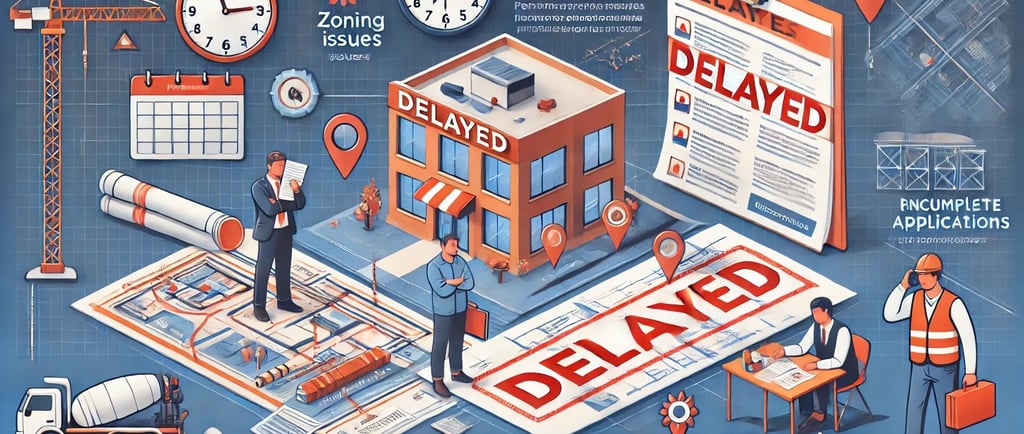
Permitting Delays Decoded: Must-Know Tips for Real Estate Investors!
3/16/20252 min read
Post by Longhorn Funding on March 16, 2025
Commercial renovations can be a goldmine for real estate investors, rehabbers, and fix-and-flippers—but permitting delays can turn that goldmine into a money pit. Whether you’re converting an old warehouse into trendy lofts or upgrading a retail space, navigating the permitting process is often the bottleneck that stalls timelines and bloats budgets. According to the National Association of Home Builders, permitting delays can add up to 6-12 months to a project timeline and increase costs by 10-20%. Here’s how to stay ahead of the game with actionable steps to minimize delays and keep your project on track.
Step 1: Do Your Homework Early
Before you even sign the dotted line on a property, research the local municipality’s permitting requirements. Every city has its quirks—some require environmental reviews, others demand historical preservation approvals. Call the permitting office or check their website for timelines and documentation needs. For example, Austin, Texas (a hot market), often takes 4-6 weeks for commercial permits, longer if zoning variances are involved.
Step 2: Build Relationships with the Right People
Get to know the local building department staff and inspectors. A quick coffee chat or a friendly call can go a long way. These folks can tip you off to common pitfalls or fast-track your application if you’ve got all your ducks in a row. Bonus tip: Hire a local expediter or architect familiar with the area—they’ve got the insider scoop and can streamline submissions.
Step 3: Over-Prepare Your Documentation
Submit detailed plans, not just the bare minimum. Include structural drawings, fire safety compliance, and utility updates upfront. Missing paperwork is the #1 reason for delays—cities like Denver report that 60% of permit rejections stem from incomplete applications. Double-check with a checklist specific to your jurisdiction.
Step 4: Plan for Contingencies
Build buffer time into your timeline and budget. If the average permit takes 30 days, plan for 45. Have backup contractors on speed dial in case delays push your crew’s availability. Investors who account for these hiccups can avoid the scramble that kills profitability.
Step 5: Leverage Technology
Use tools like e-permitting systems (available in many cities) to submit and track applications online. Stay proactive—check the status weekly and respond to requests for clarification within 24 hours. Speed is your ally here.
Permitting delays don’t have to derail your next big flip or commercial development. With preparation, relationships, and a sharp eye on the process, you’ll keep your project—and your profits—moving forward. Let us know if you need a private money lender in Austin, Texas or the surrounding areas! We are here to help.
Connect With Us on Socials!
© 2025 Longhorn Funding
We Can Reach Out to You!
Check out our Real Estate Blog!


